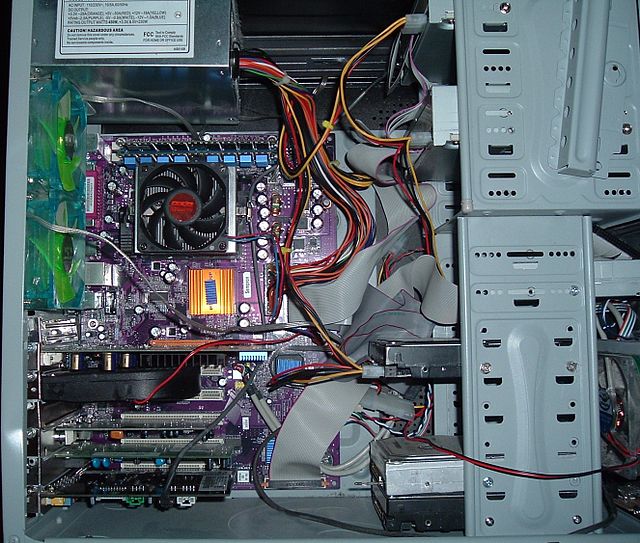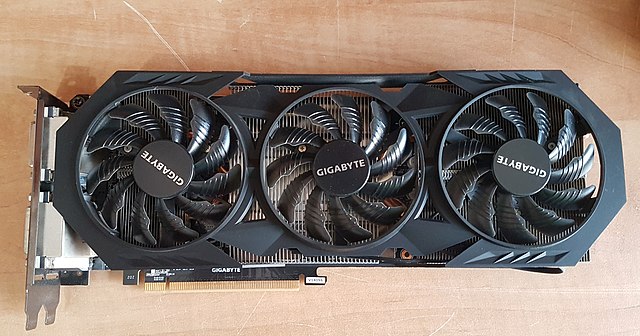The Internal Parts of a Computer
September 26th 2023
1150 words

Intro
The personal computer has many essential parts that allows it to work. The motherboard has also been called the skeleton of the computer. You can’t have a computer without a motherboard. The processor (CPU) is considered the brains of the computer. The memory and video card play an important role in how your computer functions as well. In this post I am going to cover some of the things to look out for when buying the internal components of a computer. I will not go over everything because this post would become too technical and would probably become overwhelming. In a previous post I have looked at some of the parts of a skin.A Computer is a Puzzle
The first thing that you need to understand is that building a computer is kind of like building a puzzle. Each piece is dependent to some degree on the other pieces. The motherboard will be affected by the case, CPU, memory, and even the kind of storage you want to use. The most important thing you will have to decide is probably the CPU. I will look more into the CPU a little later in the post.
Motherboards
Next, would be the size of the motherboard, which I go more into in the post about skins. By and large, though, most people will choose a mid-tower for an ATX board. If you want more information on the size or form factor then check out my post on skins.Something else that may affect the choice of motherboard is the kind of video card you want to have. The video card's size should be considered when picking a motherboard. A video card will connect to one of the available expansion slots. These are the PCI or PCIe slots.
Now, let's discuss storage a bit. There are basically two types of storage devices available for the personal computer: hard drives (HDD) and solid-state drives (SSD). HDD is completely depended on how many SATA ports are available on the motherboard. Legacy SSD can also be in the form that is depended on SATA ports. However, more modern SSD drives are dependent on the number of m.2 slots available on the motherboard.
Lastly about the motherboard, I want to quickly look at the back or I/O panel. This is effectively your USBs and network capabilities. The USB 2.0, 3.0 or even USB-c can be found on the I/O panel. Different motherboards offer different capabilities. In fact, in a lot of motherboards there is a built-in video and audio card. The video card plugs will be located on the back panel near the USBs.

Processor
Now the brains of the computer, the processor. As I said before, the motherboard and processor are dependent on each other. The socket on the motherboard will dictate what processor you can have. In fact, many people will tell you to choose the processor before choosing the motherboard. When it comes to CPUs, there are basically two choices: AMD and Intel. This choice will basically cut out half of all motherboards. An intel processor can't fit in a motherboard whose CPU socket is made for an AMD and vice versa. There is no right answer when it comes to which company to go with. There are fanboys on each side. Further research is needed on the buyer’s part to decide which processor type is best.Let's actually look at the specifications of processors to understand why some are better than others. First up is the core count. It is best to think of these as mini processors in your larger processor. A 12-core processor has essentially 12 mini processors inside of 1 processor. This will help in multitasking. Though, you will eventually hit a wall where anything above a certain number of cores will not be utilized and won’t make any difference on performance. The number of threads per core is kind of like the number of tasks the cores can perform. Clock speed is measured in gigahertz. It is essentially the rate the processor operates. All these factors need to be considered when choosing which processor to purchase.
Be sure to also realize that a heat sink or AIO water cooling system may be necessary in order to keep the processor cool during usage. Heat can play an important part in how the processor and computer performs.

Memory
The memory or RAM of a computer is also an important factor in building a computer that shouldn’t be so easily overlooked. Memory is referred to as the location of short-term data. It is where information is stored for a short time, and is accessed by the user. Motherboards will usually have max settings that restricts the amount of RAM it can handle. There is an overall max that combines each RAM stick to create the motherboard’s specified maximum RAM capabilities. Then there is a slot max where the most amount ram can go into each slot. To give an example, if there is an overall max of 128 GB of RAM and a slot max of 32 GB, then you can’t use two slots of 64 GB to get to 128 GB.The type of memory is categorized by DDRs (Double Data Rate). The kind of memory will depend mainly on the processor but also the motherboard. There is, as of writing this post, mainly DDR4 or DDR5. For each type of RAM, there is also memory speed, measured in megahertz. This speed is the time it takes for memory to get a request from the CPU and then read and write data. The CAS latency or CL is the time it takes the computer to wait before it actually starts reading data. This means the lower the CL the better performance. Refer to the motherboard’s specifications of allowed RAM type and speeds.

Video Card
Finally, I want to go into the video card. Video cards are also known as Graphical Processing Units (GPUs). The manufacture can make a difference in what software you will use to best optimize your video card. The back of the GPU will come out to the back of your skin. The video card will have different display plugs to which monitors and other display devices can be connected. It could have the VGA, DVI, HDMI or display port. HDMI is the most common, while display ports are the new thing.As for measurements, there are VRAM, clock speed, and stream processors or CUDA cores. VRAM stores information needed to render an image on screen. The information can be things like textures, lighting, and shadows. The most common form of VRAM is GDDR. The faster the VRAM the faster the graphics card. Next is the clock speed. This indicates how quickly the graphics are processed before it is sent to the monitor or display device. The higher the clock speed, typically, the higher the cost of the graphics card. Lastly, are stream processors or CUDA cores. These are the cores that essentially does the grunt work of the GPU. AMD calls this stream processors, while NVIDIA calls this CUDA cores. CUDA cores are the larger version between the two. Since NVIDIA and AMD video cards are different in design, it isn’t smart to compare how many cores between the two companies. Instead, it is important to compare video cards within the same series.
